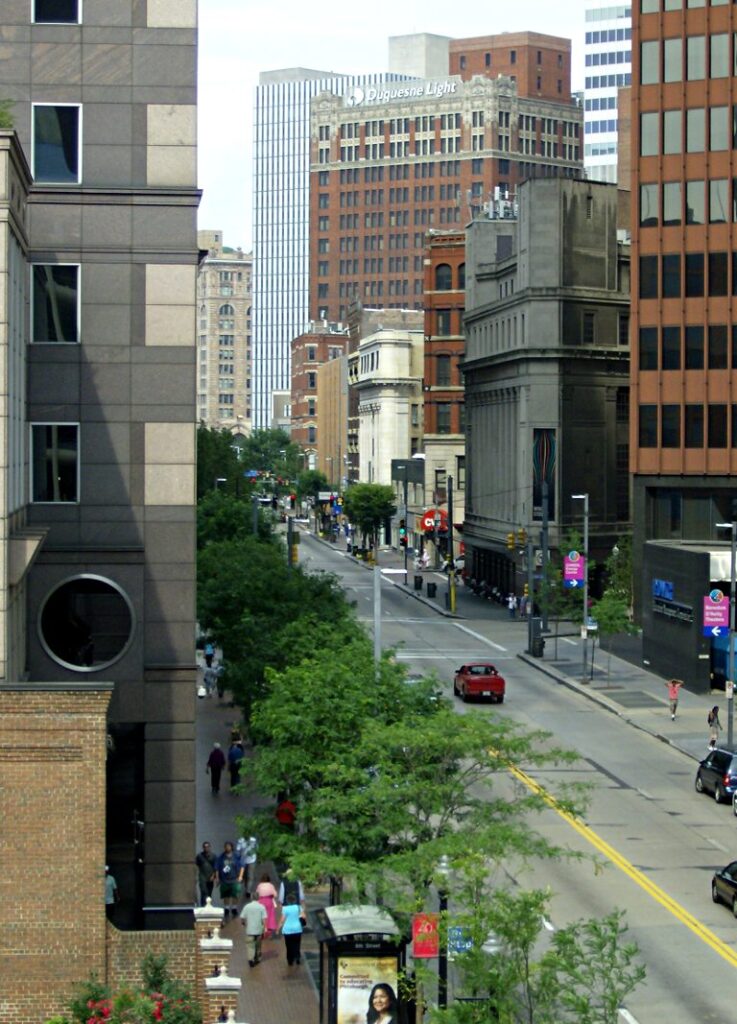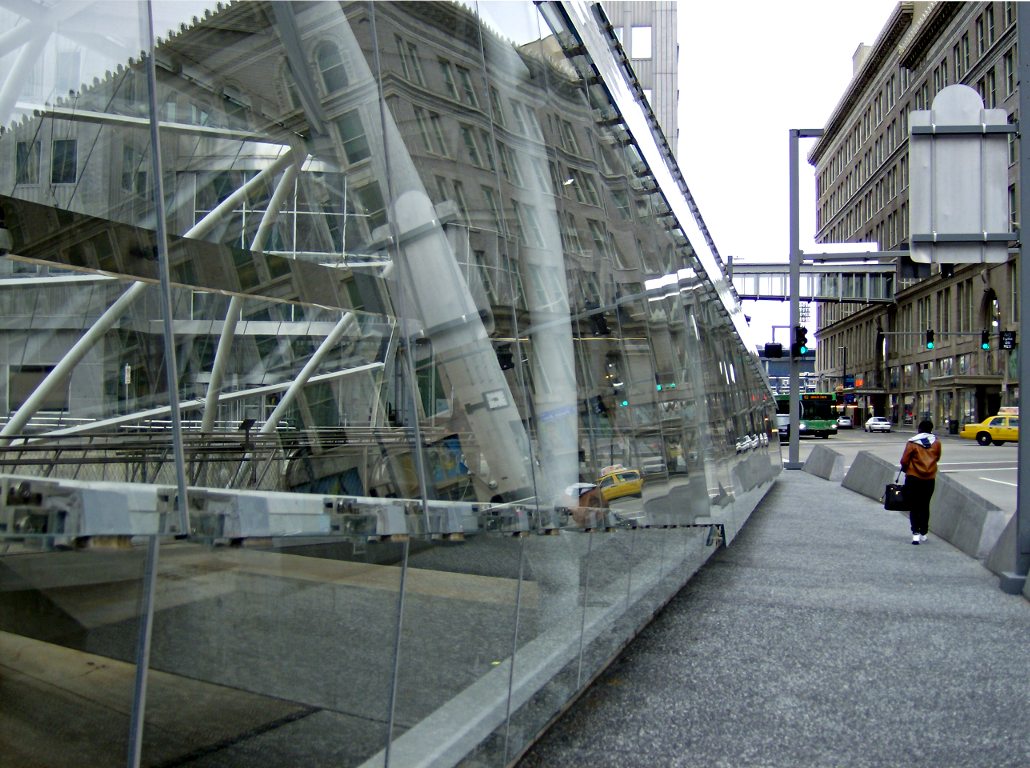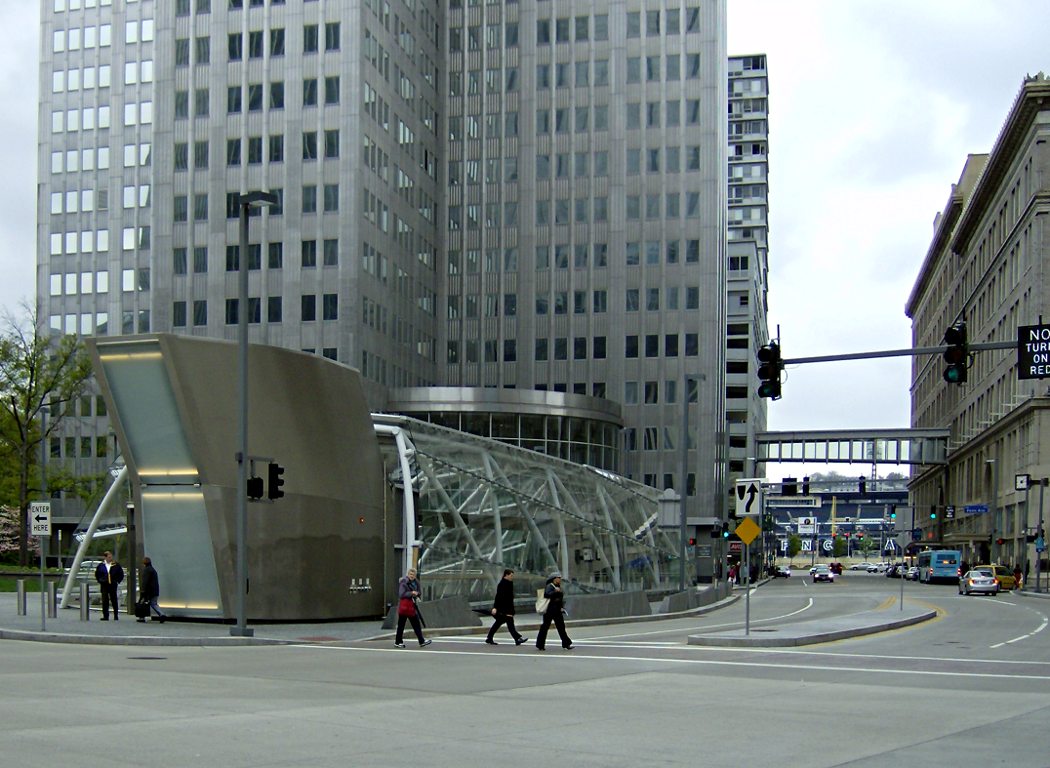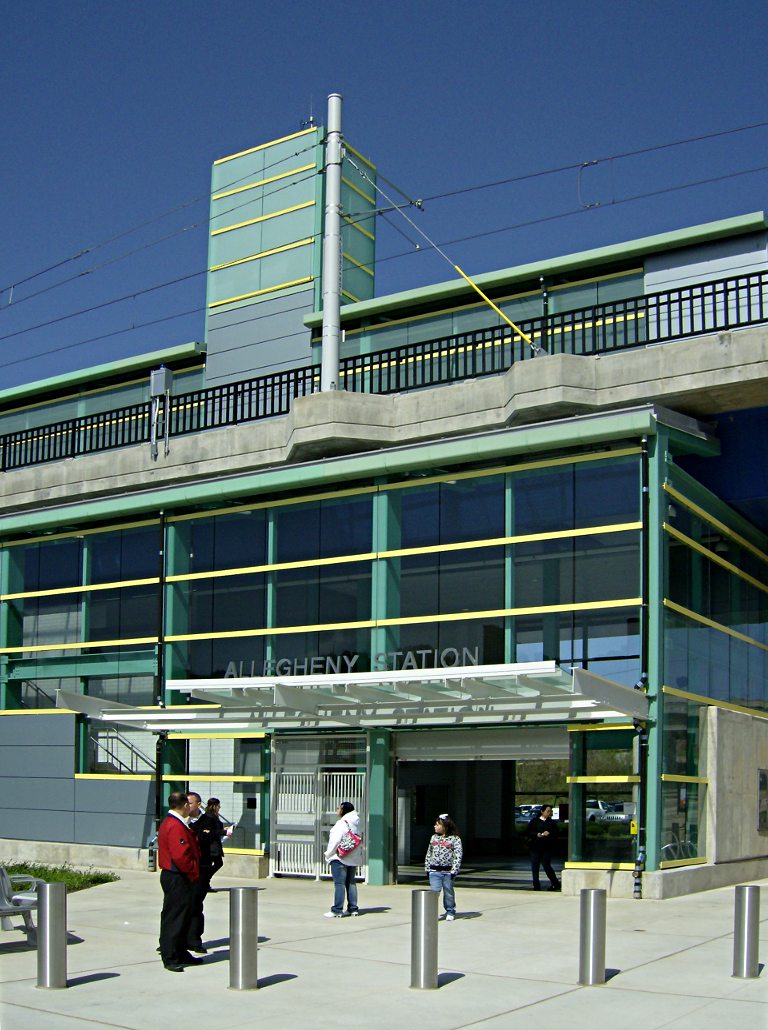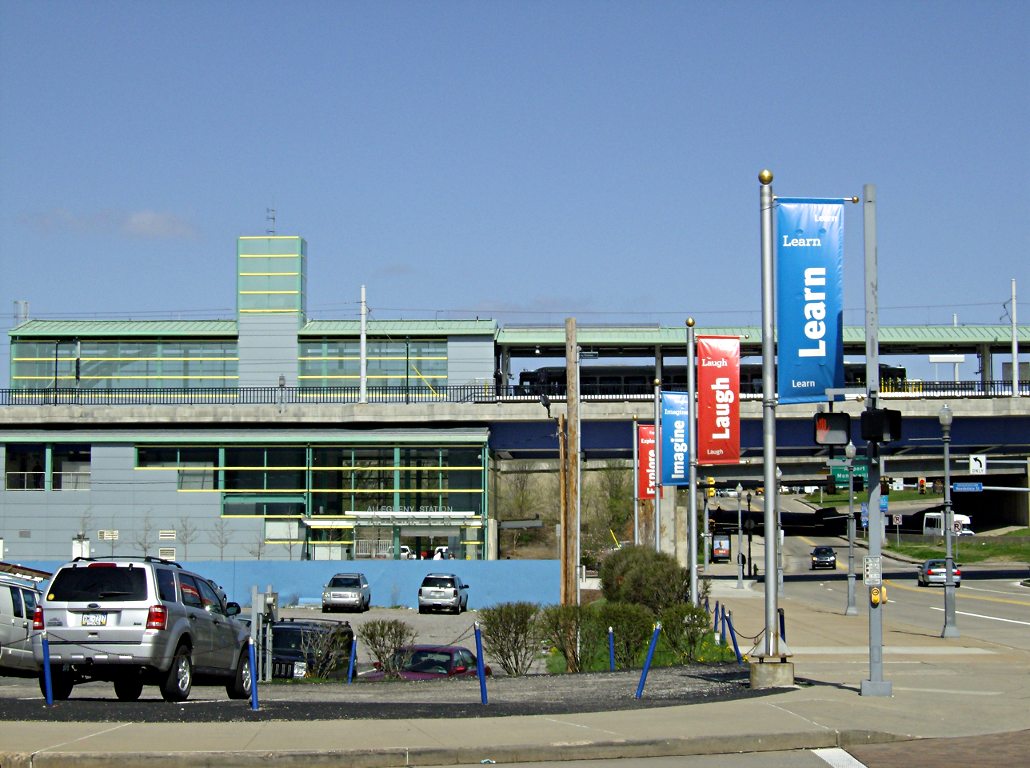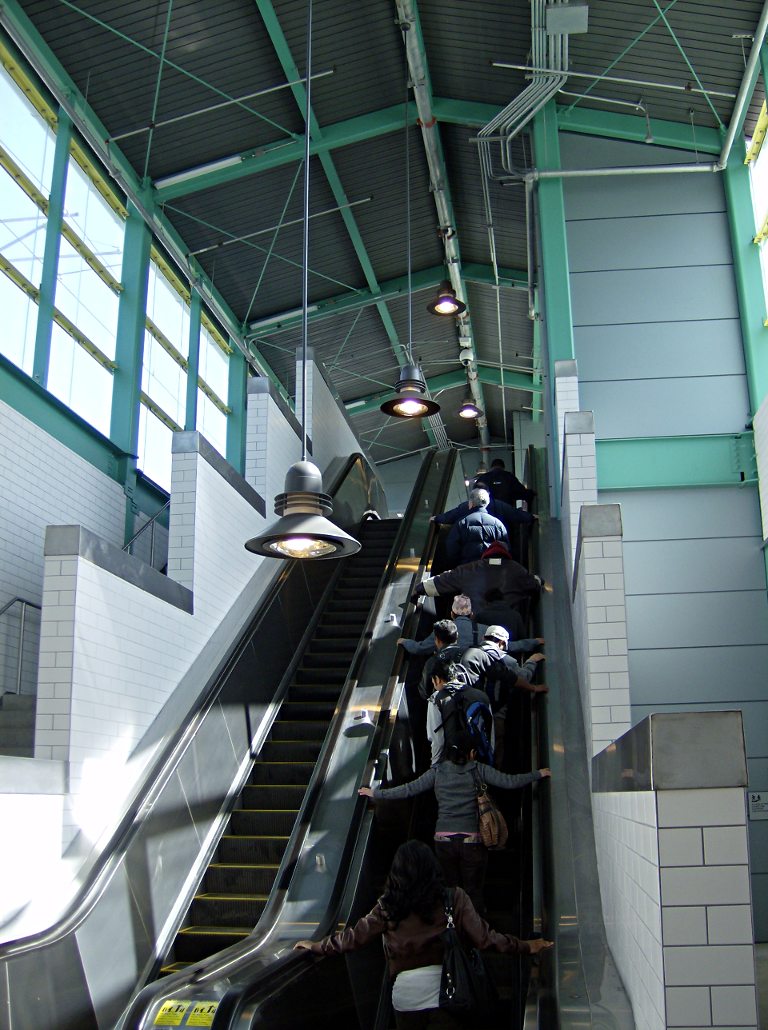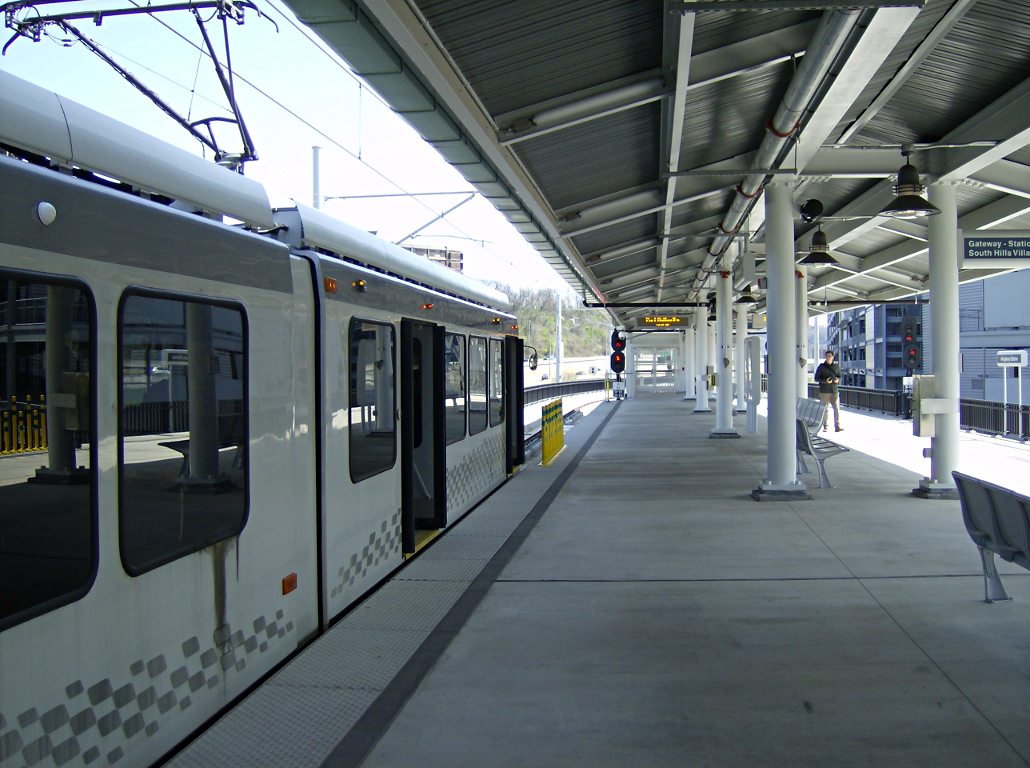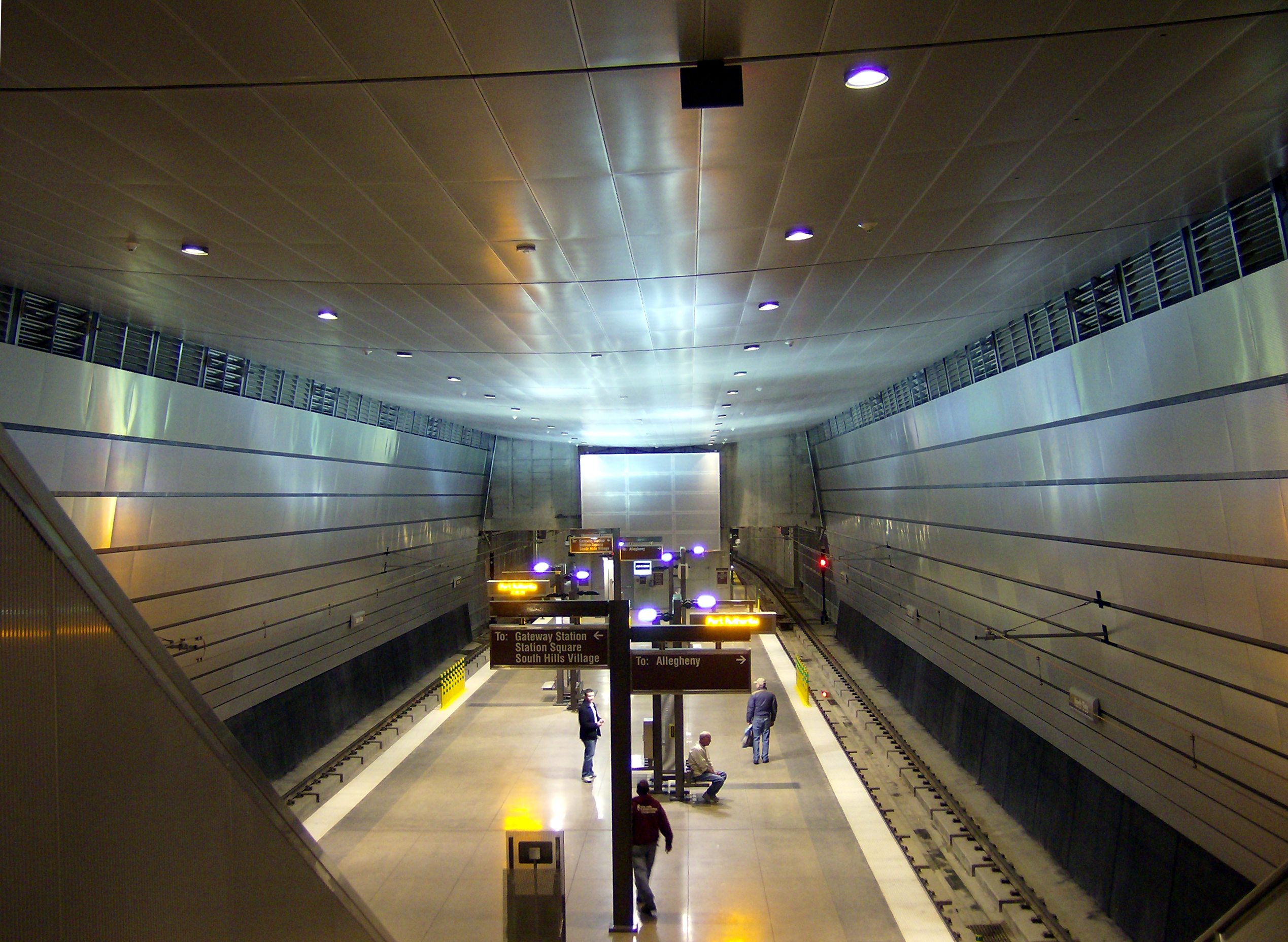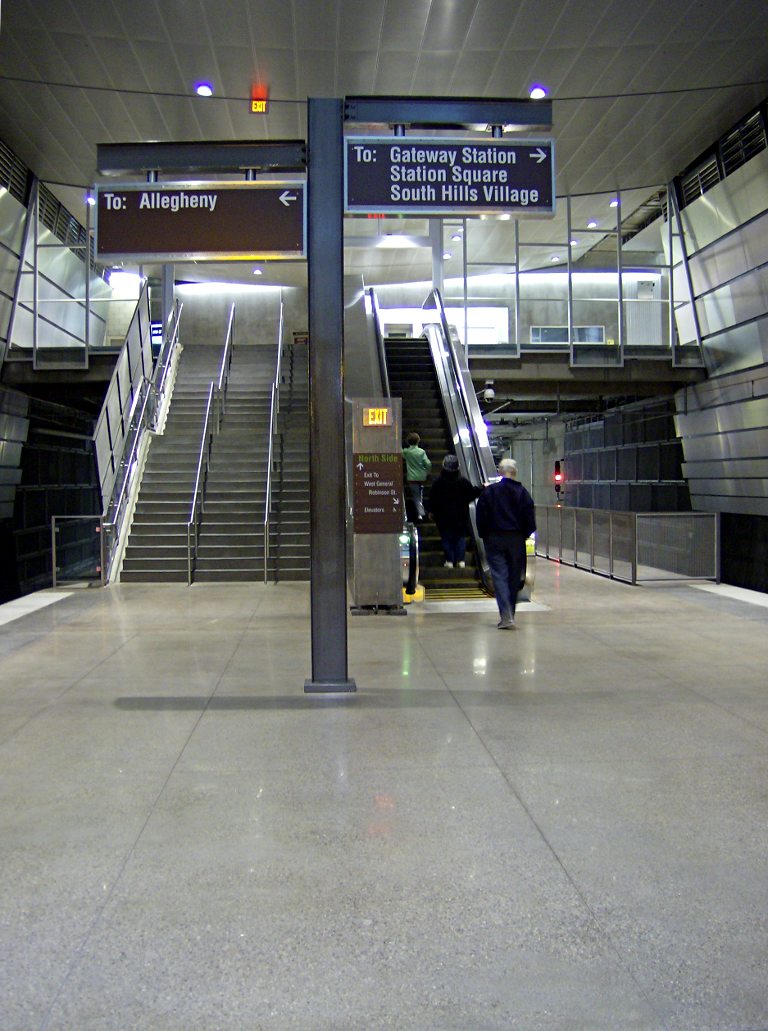Click on the image for a PDF copy.
By far the most popular features on this site are the Pittsburgh rapid-transit maps Father Pitt created himself, probably because the Port Authority hasn’t had a decent overall rapid-transit map since about 1990. But old Pa Pitt’s most recent map is badly out of date, and it’s time for a revision. Here it is.
Three kinds of transit are used on Pittsburgh’s rapid-transit lines, or “fixed-guideway systems” as the bureaucrats call them:
Trolleys or streetcars run on the Red Line and the two Blue Lines. All the lines go into a subway downtown and under the Allegheny to the North Side.
Busways are metro lines for buses; they are designed like subways, with stations relatively far apart.
Inclines go from the bottom of Mount Washington to the top. Although they move slowly, they are still by far the fastest way to make the trip without a helicopter.
Father Pitt’s map uses the mnemonic device of colored lines for the busways. The official Port Authority map uses the same colored lines, obviously the remnant of some scheme, very much like Father Pitt’s “Pittsburgh Metro” idea, that was quashed by senior executives; but the lines are never named, and the reason for the letters in the routes that travel the busways is never officially explained.
The Port Authority also uses orange-colored lines, and bus routes beginning with “O,” for the carpool lanes in the Parkway North. Father Pitt has not included those lines on this map.
Much of the controversy over “bus rapid transit” comes from the corner-cutting implementation in other cities. Boston, for example, has its “Silver Line,” popularly called the “Silver Lie,” which crosses at-grade intersections and has to deal with city traffic, yet is promoted as equivalent to a subway line. Pittsburgh did it right. Our busways really are metro lines for buses: no at-grade intersections, no mixing with traffic. The trip from downtown to Shadyside by busway is literally twice as fast as the quickest automobile route. Father Pitt still thinks rail transit is superior, but he cannot withhold his admiration, however grudging, for the excellent bus rapid transit we do have.



